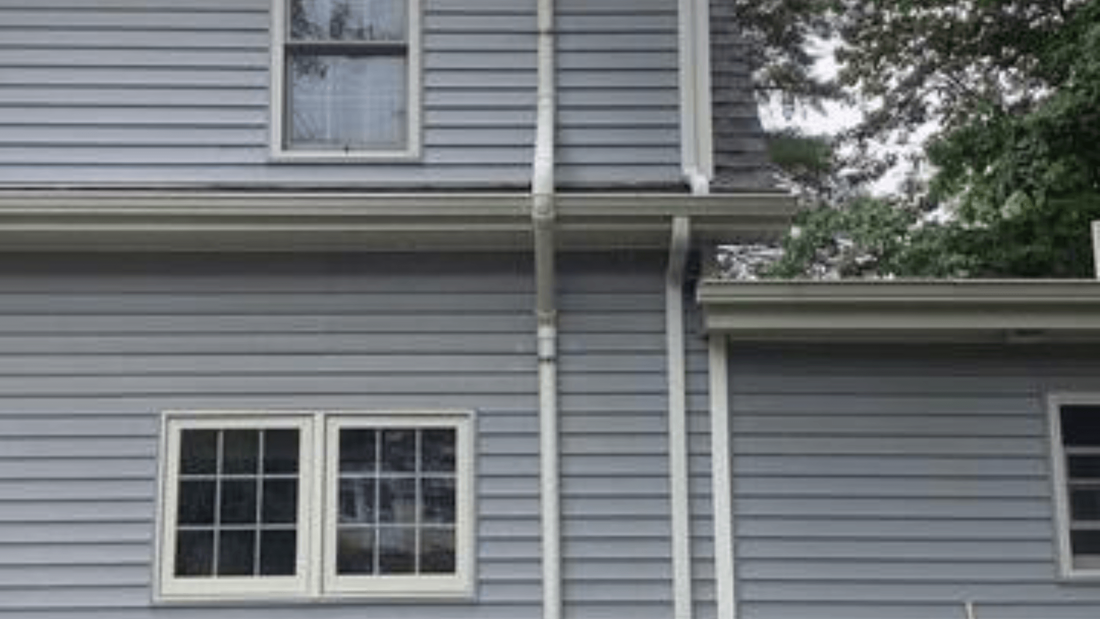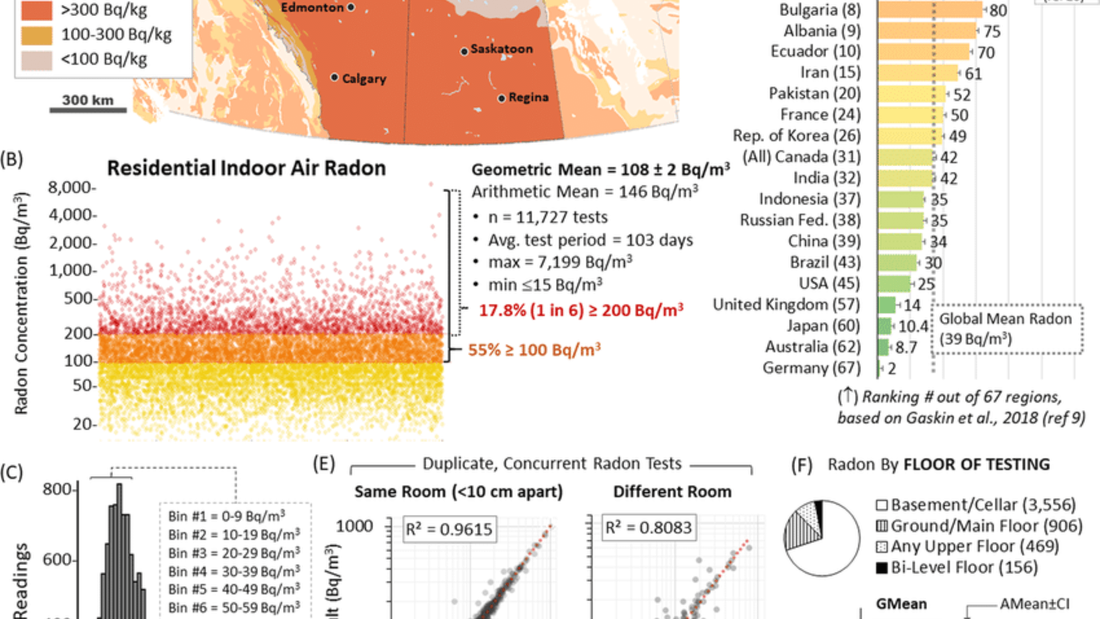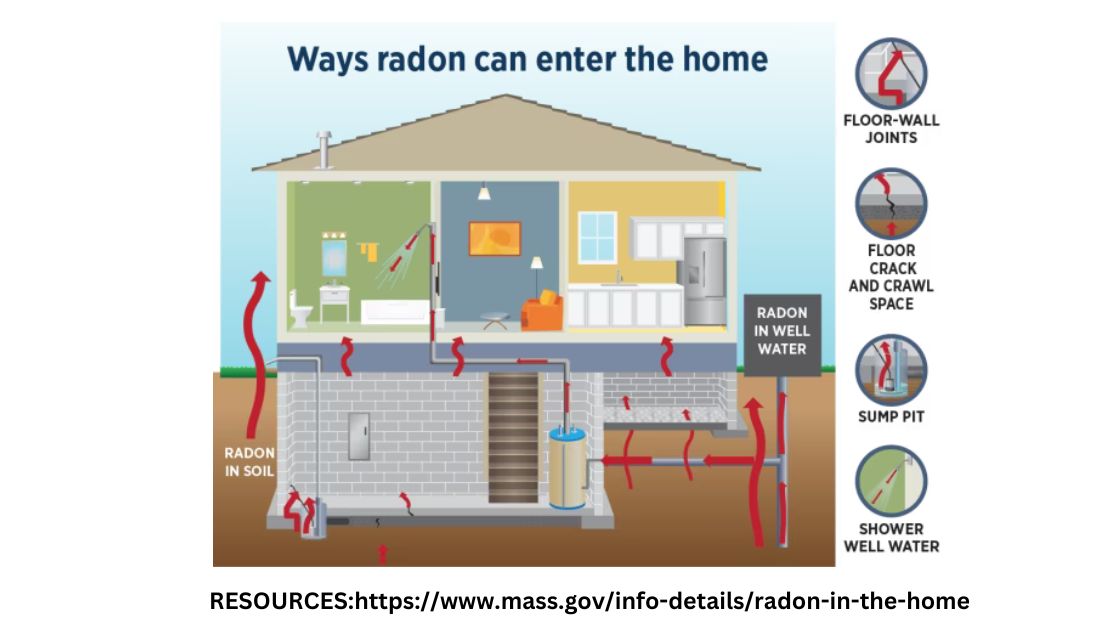|
Radon gas exposure is becoming more of a worry in modern homes across North America, bringing major health dangers such as an increased risk of lung cancer. Recent research has highlighted the worrisome trend of rising radon levels, particularly in the North American Prairie region. This raises the question, "Does radon rise differently in various geographical areas?" Understanding how radon behaves and moves within homes is crucial for assessing the potential risks it poses to occupants. Therefore, the importance of radon testing cannot be overstated, as it allows homeowners to promptly identify and address high radon levels, ensuring a safer living environment for their families. This article aims to comprehensively understand the factors contributing to this growing problem, including the impact of building design, occupant behavior, and seasonal variations. Read on to learn more. Radon Exposure in the North American Prairie Region
Factors Influencing Radon Exposure in Modern HomesImpact of Year of Construction
Building Characteristics
Occupant Behavior
Seasonal Variations in Radon Exposure
Public Health Implications and Recommendations
Recommendations for Stakeholders
ConclusionThe rise in radon exposure within modern North American homes, particularly in the North American Prairie region, demands urgent attention. Understanding the risk factors associated with high radon levels, the influence of building design, occupant behavior, and seasonal variations is essential in formulating effective prevention strategies. By raising awareness and implementing measures to mitigate radon exposure, we can safeguard the health and well-being of individuals and families. Policymakers, builders, and homeowners must work together to address this significant public health concern and prioritize radon testing and mitigation. We can only effectively combat the growing radon exposure in modern homes through collective efforts. FAQsWhat is radon gas, and why is it a concern in homes?Radon gas, a naturally occurring radioactive gas, is produced by the decay of uranium in soil, rock, and water. It can enter homes through foundation faults and floor and wall gaps. Long-term radon exposure raises the risk of lung cancer, which is cause for concern. How does the year of construction influence radon levels in homes?Newer homes tend to have higher radon levels compared to older structures. This is likely due to changes in building practices and materials used in modern construction, which may unintentionally allow greater radon penetration. What factors in building design contribute to increased radon exposure?Several building characteristics can influence radon levels. These include larger surface areas, taller ceilings, fewer storeys, specific foundation types (e.g., basements), and curtain wall construction materials. These factors can create more opportunities for radon entry into the living spaces of a home. How does occupant behavior affect radon exposure?Occupant behavior, such as thermostat settings and window opening habits, can impact the air dynamics within a home. While there is no significant correlation between thermostat settings and radon levels, reduced window opening behavior, especially on upper floors, has been associated with higher radon concentrations. Do radon levels vary seasonally?Contrary to popular belief, the research has shown that radon levels do not significantly fluctuate between seasons. Nearly half of the residences displayed minimal differences in radon levels between winter and summer, challenging the notion that radon levels are highest during winter. What are the public health implications of radon exposure?Radon exposure is a significant public health concern due to its link to lung cancer. Long-term radon exposure can raise the chance of getting lung cancer, making it critical to take proactive steps to limit radon exposure in the household.
0 Comments
Radon is a colorless, odorless, and tasteless substance that poses a health risk to humans. It is among the leading causes of lung cancer, second only to smoking. It can leak into homes through gaps in foundations or walls, necessitating homeowners to understand its concentration levels to protect themselves and their loved ones from its risks. So, where is radon highest in house? Let's investigate where radon can be found within a home and how to reduce high radon levels if this is an issue for your residence. Where Can Radon Be Found in the Home?Below are typical areas with elevated radon levels within homes. 1. Basements and Crawl SpacesBasements and crawl spaces are some of the most likely spots where radon can be found, with levels typically reaching their highest point at the lowest part of any home or building. Testing in these spaces should be your starting point to ensuring safe levels. Radon in basements seeps through cracks in the foundation, walls, and floor of basements/crawl spaces, making them vulnerable to high radon gas emissions. 2. Lower Levels of Split-Level HomesSplit-level homes feature lower levels that are partially underground. These living areas may contain elevated radon levels, which further increases your exposure risk. Bedrooms or family rooms on these lower levels often function as living areas in these houses - further increasing your exposure risk to radon under house. 3. Rooms With Direct Contact with the GroundRooms built close to the ground, like sunrooms, tend to contain higher concentrations of radon than rooms that sit on an elevated platform, such as concrete slabs - another source of radon emissions. Furthermore, their walls often consist of glass which creates an enclosed greenhouse effect containing it within. 4. Areas With Poor VentilationAreas with inadequate ventilation, including bathrooms, laundry rooms, and kitchens, tend to have higher radon gas concentrations. Radon in homes can collect in these spaces if there is insufficient airflow between spaces making a dispersion of this gas more difficult. 5. Houses in Areas With Higher Radon Levels in the SoilHomes situated in areas with higher soil radon concentrations tend to contain higher levels of radon inside. Since geological factors may contribute to soil radon variations, testing for radon should be performed at these locations regularly. What Should Be Done If Your House Contains High Radon Levels?Which area of the home will typically have the highest concentration of radon gas? If your home contains high radon levels, steps must be taken to minimize your exposure. The first step should be a comprehensive radon test conducted independently by an inspector or by purchasing a test kit from a hardware store. If the results show elevated radon levels at or above four pCi/L, then action should be taken and remediation efforts undertaken immediately. Hiring a certified contractor specializing in mitigation is essential to solving your home's radon issues. Once at your property, the professional will assess it and recommend the most effective strategy for lowering its levels. This can include sealing cracks in the foundation or walls or installing an automated mitigation system. Final ThoughtsRadon gas is a severe health hazard found throughout homes and buildings worldwide. To safeguard yourself and those you love from its risks, it's vital that you remain informed and take necessary precautions. By understanding where radon gas most frequently appears and testing for it in homes, you can take measures to reduce exposure. If your home may contain high levels of radon exposure, don't delay getting tested; an ounce of prevention is worth more than any potential cure for protecting against this deadly gas. Stay safe by staying informed!
|
AuthorIndianapolis Radon Mitigation: Trusted experts in radon mitigation, committed to providing efficient and effective radon system installations to ensure the safety and well-being of your home and family ArchivesCategories |
|
SERVING INDIANAPOLIS & SURROUNDING AREAS
|
BUSINESS HOURS
Mon-Fri: 7am-7pm Sat & Sun: 9am-5pm OUR SERVICES Radon Mitigation Radon Testing Radon System Installation Indianapolis Radon Mitigation 5341 Waterton Lakes Dr, Indianapolis IN 46237 317-203-8117 |
Call Today!
317-203-8117 CREDENTIALS
In Business Since: 1988 Memberships & Affiliations NRPP national radon proficiency program State Licensing License #: RMT00798 |




